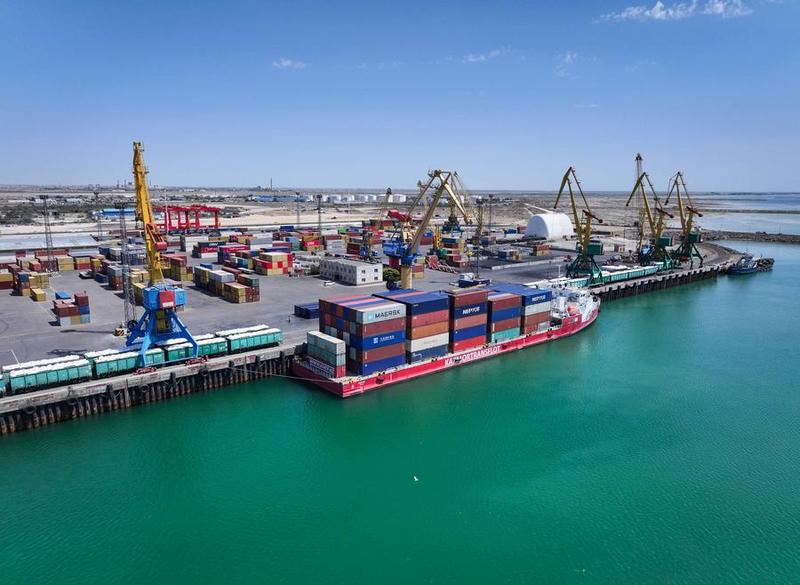Trade, green transition and sci-tech cooperation see strong momentum

Chinese enterprises, guided by strategic imperatives for global deployment, are actively investing in partner economies involved in the Belt and Road Initiative, thereby providing more sustained and comprehensive momentum for regional development, experts said.
According to Ernst & Young's "Overview of China Outbound Investment of H1 2025," China recorded $64.8 billion in completed turnover in other BRI economies in the first half of the year, up 7.5 percent year-on-year.
From ports to power plants, and from railways to photovoltaic projects, China is accelerating the pace of overseas investment under the BRI.
READ MORE: New markets to spur foreign trade
Experts say that as the BRI enters a new "golden decade", it is aligning closely with global development needs and is demonstrating strong momentum in areas such as trade and investment, green transition, and science and technology cooperation.
Xie Laihui, executive director of the Division of Belt and Road Studies at the National Institute of International Strategy under the Chinese Academy of Social Sciences, said China's investment in BRI partner countries has shown countercyclical growth, with standout features across project scale, technology and cooperation models.
Xie highlighted a steady rise in total investment and returns, alongside a shift in the investor landscape from dominance by State-owned enterprises to parallel advances by both SOEs and private firms. He also noted that high-end manufacturing, the digital economy and telecommunications services — sectors tied to new quality productive forces — have emerged as bright spots in investment growth.
"These highlights reflect Chinese enterprises' breakthroughs in taking technology global and innovating cooperation models," Xie said.
According to the latest data released by the Ministry of Commerce, China's outbound direct investment stabilized with improving quality in the first half, with nonfinancial direct investment in BRI partner countries reaching $18.9 billion, up 20.7 percent year-on-year.
Viewed over a longer horizon, from 2021 to the first half of this year, two-way investment between China and BRI partner countries exceeded $240 billion, including more than $160 billion in China's outbound investment and over $80 billion in investment from partner countries into China, reflecting deepening investment cooperation.
Institutions such as the International Monetary Fund, the United Nations Department of Economic and Social Affairs, and the Asian Development Bank have taken close note of the robust performance of China and BRI investments.
Xie said investment under the Belt and Road framework has maintained strong growth, supported not only by long-standing drivers such as policy, resources and markets, but also by new catalysts including the upgrading of corporate globalization strategies and the diversification of financial instruments. Overall, BRI investment shows steady progress, with tradition and innovation advancing in parallel, he added.
Meanwhile, green energy cooperation has emerged as a standout feature of deepening BRI collaboration in recent years. Under the framework of building a Green Silk Road, Chinese new-energy enterprises are actively expanding overseas, using investment to drive the energy transition in BRI partner countries, advance the adoption of clean energy and emissions reduction, and, to a certain extent, enhance energy security, Xie said.
Fudan University's Green Finance and Development Center recently released its China Belt and Road Investment Report (H1 2025), which shows that China's energy investment within BRI cooperation hit a record high this year.
Green energy collaboration also set records, with wind, solar, and waste-to-energy projects totaling $9.7 billion and adding approximately 11.9 gigawatts of new installed capacity. The "new trio", represented by new energy vehicles, lithium batteries and photovoltaic products, is rapidly rising in BRI partner markets.
ALSO READ: BRI investments hit new high
Hu Ming, Party secretary of the China Electric Power Planning and Engineering Institute, said China has consistently embedded the concept of green, low-carbon development throughout the entire process of BRI green energy cooperation.
During the 14th Five-Year Plan (2021-25) period, China's direct investment in Belt and Road partner countries exceeded $160 billion, with green energy investment surpassing traditional energy in scale, he said.
China has established a green industrial chain with international competitive advantages, deepening green capacity cooperation with partner countries. It now supplies 80 percent of the world's photovoltaic modules and 70 percent of wind power equipment, providing solid support for the Belt and Road's green energy transition, Hu said.
Contact the writers at renqi@chinadaily.com.cn


